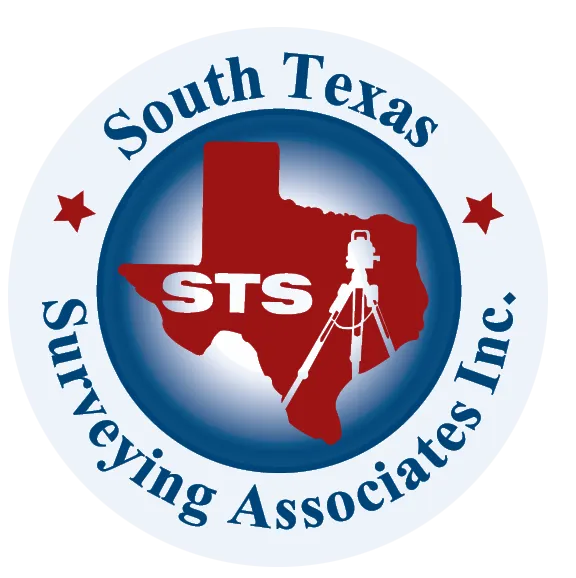Surveying Texas Since 1980 Family Owned, Customer Devoted | Firm #10045400 | 281-556-6918
See Our Latest Blogs

Site Grading and Drainage: The Role of Topos
"Texas, often referred to as the Lone Star State, is a thriving hub for economic growth and innovation, making it an attractive destination for commercial real estate investment." - Chris Evans
Site Grading and Drainage: The Role of Topographic Surveys in 2025
In commercial real estate development, site grading and drainage are fundamental to the success of any project. Proper grading ensures the stability of structures, while effective drainage prevents water accumulation that could lead to erosion, flooding, or damage to property. At the core of these processes lies one essential tool: the topographic survey.
Topographic surveys provide a detailed map of a site’s elevation, contours, and natural features, offering developers the data needed to design and implement grading and drainage plans. In 2025, as climate change and urban expansion increase the complexity of development projects, the role of topographic surveys has become even more critical.
This article explores how topographic surveys drive site grading and drainage solutions, the challenges developers face in 2025, and why accurate elevation mapping is indispensable for modern commercial projects.
What Are Topographic Surveys?
A topographic survey is a detailed mapping of a property’s physical features, including its elevation, contours, and man-made improvements. It provides a snapshot of the land’s natural state and identifies any changes required to accommodate construction.
Key Features of a Topographic Survey:
Elevation Data: Maps the rise and fall of the land.
Contours and Slopes: Identifies gradients that impact water flow and structural stability.
Natural Features: Includes streams, trees, and soil types.
Man-Made Structures: Documents existing roads, buildings, and utility lines.
By providing this comprehensive data, topographic surveys lay the foundation for effective site grading and drainage design.
The Importance of Site Grading in Commercial Development
Site grading involves reshaping the land to create a stable, level foundation for construction. It ensures that structures are built on solid ground and prevents issues like uneven settling or water infiltration.
Key Objectives of Site Grading:
Leveling the Site: Prepares the land for building foundations, parking lots, and roads.
Preventing Erosion: Stabilizes slopes and minimizes soil displacement during heavy rain.
Optimizing Water Flow: Directs water away from structures and toward designated drainage areas.
Without accurate elevation data from a topographic survey, grading plans can lead to costly mistakes, such as inadequate compaction or poor drainage.
The Role of Drainage in Commercial Projects
Drainage systems manage the flow of water on a property, preventing waterlogging, flooding, and damage to infrastructure. Proper drainage design relies heavily on data from topographic surveys.
Types of Drainage Systems:
Surface Drainage: Uses slopes and channels to direct water away from buildings.
Subsurface Drainage: Employs underground pipes to remove excess water from the soil.
Stormwater Management: Includes retention ponds, bioswales, and permeable surfaces to reduce runoff and improve water quality.
Topographic surveys guide the placement and design of these systems by identifying natural water flow patterns and elevation changes.
Challenges in Site Grading and Drainage in 2025
1. Climate Change and Weather Variability
With more frequent extreme weather events, developers must design sites that can handle heavy rainfall and flooding. Topographic surveys provide the data needed to predict water movement and implement resilient drainage solutions.
2. Urbanization and Limited Space
As cities expand, developers are working with smaller, more constrained sites. Accurate elevation mapping is critical for optimizing land use and ensuring effective water management in dense urban environments.
3. Regulatory Compliance
In 2025, stricter environmental and stormwater regulations require developers to implement sustainable drainage solutions. Topographic surveys help ensure compliance by identifying environmentally sensitive areas and guiding water management designs.
4. Integration With Smart Technology
Modern drainage systems often incorporate smart sensors and automated controls. Topographic surveys must integrate seamlessly with these technologies to optimize performance and ensure long-term sustainability.
How Topographic Surveys Optimize Site Grading and Drainage
1. Identifying Natural Water Flow Patterns
Topographic surveys map the natural movement of water across a site, helping engineers design drainage systems that align with existing flow patterns.
2. Planning Slopes and Gradients
Elevation data from surveys ensures that slopes are graded correctly to prevent water from pooling near buildings or flooding low-lying areas.
3. Locating Drainage Features
Surveys guide the placement of critical drainage features, such as culverts, retention ponds, and bioswales, ensuring maximum efficiency and minimal environmental impact.
4. Preventing Erosion and Sedimentation
By identifying steep slopes and vulnerable areas, surveys help developers implement erosion control measures, such as retaining walls or vegetation.
5. Supporting Advanced Modeling
Modern software tools use topographic survey data to create 3D models of the site, allowing engineers to simulate water movement and test grading plans before construction begins.
Case Study: Using Topographic Surveys for a Texas Commercial Development
Project Overview:
A developer planned to build a retail center on a 15-acre site in Dallas. The property featured significant elevation changes and a small creek running through the center.
Challenges:
The site had uneven terrain that required extensive grading.
The creek posed a flooding risk during heavy rain.
Local regulations mandated stormwater retention to reduce runoff.
Surveyor’s Approach:
Conducted a topographic survey to map elevation changes and natural water flow.
Identified the flood zone surrounding the creek and recommended elevating nearby structures.
Designed a grading plan to level the site while directing water toward a retention pond.
Provided data for 3D modeling to simulate drainage performance and refine the design.
Outcome:
The topographic survey enabled the developer to:
Implement a cost-effective grading and drainage plan.
Comply with local stormwater regulations.
Prevent flooding and erosion, ensuring the long-term stability of the project.
The Role of Technology in Topographic Surveys in 2025
1. Drones and Aerial Imaging
Drones equipped with cameras and LiDAR sensors provide high-resolution images and elevation data, making it easier to survey large or complex sites quickly.
2. LiDAR Technology
LiDAR (Light Detection and Ranging) uses laser sensors to create detailed 3D maps of the land, capturing even the smallest elevation changes.
3. Geographic Information Systems (GIS)
GIS tools integrate topographic survey data with other geographic data, such as zoning maps and environmental overlays, providing a comprehensive view of the site.
4. 3D Modeling Software
Survey data is processed into 3D models that allow developers to visualize grading and drainage plans, test scenarios, and make adjustments before construction begins.
Why Topographic Surveys Are Indispensable in 2025
1. Climate Resilience
With unpredictable weather patterns and rising sea levels, topographic surveys provide the data needed to design sites that can withstand extreme conditions.
2. Sustainability Goals
As developers prioritize sustainability, surveys help identify opportunities for green infrastructure, such as bioswales and rain gardens, that improve drainage while protecting the environment.
3. Cost Efficiency
Accurate surveys reduce costly rework by ensuring grading and drainage plans are precise from the start.
4. Regulatory Compliance
Stricter regulations in 2025 require detailed elevation and drainage data to secure permits. Topographic surveys provide the documentation needed to meet these requirements.
Why Choose South Texas Surveying for Topographic Surveys?
At South Texas Surveying, we specialize in delivering accurate and reliable topographic surveys for commercial developments across Texas.
Our Services Include:
High-resolution elevation mapping using drones and LiDAR.
Comprehensive reports for site grading and drainage planning.
Integration with GIS tools and 3D modeling software.
Expertise in regulatory compliance and sustainable design.
With decades of experience and cutting-edge technology, we help developers create resilient, cost-effective projects that stand the test of time.
Conclusion: Build With Confidence in 2025
Topographic surveys are the cornerstone of successful site grading and drainage plans. By providing accurate elevation data and identifying potential risks, these surveys empower developers to create stable, sustainable, and compliant projects.
At South Texas Surveying, we’re committed to helping developers navigate the complexities of modern construction with precision and expertise. Contact us today to schedule a topographic survey and take the first step toward a successful commercial development.
Delivering Land Surveys with Attention to Detail
George Owens
Commercial Broker

I have worked with many surveying companies, but South Texas Surveying stands out for their exceptional professionalism, attention to detail, and commitment to their clients.
Kim Wexler
Project Manager

Their accurate and thorough surveys make my job a lot easier, their ability to communicate effectively with all parties involved is commendable. I highly recommend South Texas Surveying.
James Cart
Homeowner

As a new homeowner, I was thoroughly impressed with the professional service provided by South Texas Surveying. I high recommend their services to any one buying a home in Houston.
Contact Us
Email: [email protected]
Office Address: 11281 Richmond Ave
BLDG J, Suite 101,
Houston, TX 77082
Office Hours: Mon – Fri 8:00am – 5:00pm
Office Phone Number: 281-556-6918
11281 Richmond Ave
BLDG J, Suite 101,
Houston, TX 77082
Firm Number: 10045400
Resources
© Copyright 2024 South Texas Surveying Associates
